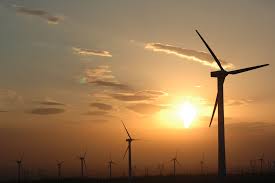Tim Buckley, IEEFA’s director of energy finance studies, Australasia.
Onshore wind-generated electricity is increasingly cost competitive with new fossil-fuel generation. In an increasing number of wind-resource-rich countries, wind is now the low-cost source of new supply. In Texas, wind electricity is priced at $20 to $30/megawatt-hour (net of subsidies), while in Morocco and Mexico prices are being set now below €30/MWh. In Brazil, wind at $48/MWh is the preferred low-cost source of new supply. In India, new wind is priced at Rs3.67 to 5.87/kWh ($55 to 90/MWh), a deflationary outcome that is below the cost of new imported-coal generation.

In an increasing number of wind-resource-rich countries, wind is now the low-cost source of new supply.
While the offshore wind sector remains an expensive source of electricity, 2015 was another record year on that front, too, with 3.4 gigawatts installed globally, increasing the cumulative installed base by a third, to 12 gigawatts. This investment should prove instrumental in proving up the technology design and engineering capacity for a rapid acceleration in the commercial deployment of offshore wind globally over the next decade. Japan, the U.S., China, India and Korea all are poised to capitalize on lessons learned by the U.K., Germany and Denmark.
Offshore wind generation brings the potential for major diversification of many electricity systems. And its very high capacity-utilization rates (up to double that of onshore wind, which averages 25 to 30% globally) take maximum advantage of more consistent and stronger offshore wind resources. Offshore wind also provide an important resource for land-constrained countries like Japan, Korea, India, China and the U.K., particularly given its relative proximity to major population centers in coastal areas.
Technology developments combined with massive economies of scale and increasing financial-sector interest make the global wind generation sector a key enabler of the Paris commitments to constrain global warming to below 2 degrees Celsius.
Our view is that wind-energy progress—when viewed in conjunction with similar developments in the solar, battery storage, grid and energy-efficiency sectors—makes a global electricity-sector transformation self-evident and inevitable.
Filed Under: News




